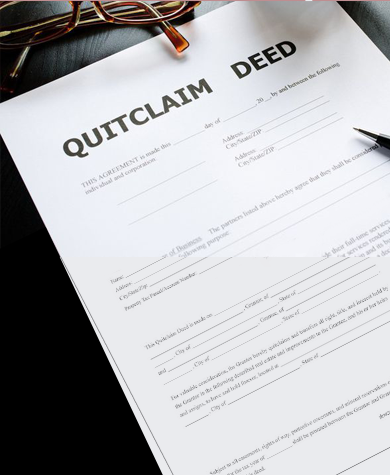Maintaining up to date records detailing our assets is imperative for proving legal ownership. In the case of property, a property deed is necessary to prove legal ownership of a property.
What Is a Property Deed?
A property deed is the legal mechanism used to convey real property (land and the property attached to it) from a seller to a buyer. Issues related to property purchase and transfer can be quite complicated, and property deeds are no exception. There are several types of deeds and specific requirements for transfer.
Types of Property Deeds
The most common classification for Property Deeds is based on the type of title warranty transferred via the Property Deed. These include:
- General Warranty Deed
This type of Property Deed is the most protective to the buyer. The seller must provide legally binding assurances to the buyer that it will protect the buyer from prior claims as they relate to the conveyed property. - Special Warranty Deed
This Property Deed type provides more limited warranty due to the timeframe it covers and is therefore less protective of the buyer. Under this Deed, the seller only warrants the buyer against defects that arose while the seller was the property owner. - Quitclaim Deed
This is akin to a Non-Warranty Deed and is most protective to the seller who makes no promises or warranties regarding the quality of the title. It simply conveys whatever interest the seller has in the title. If it were to be discovered that the seller did not actually receive title to the property (and therefore had no right to transfer title), there is no recourse for the buyer. -
Special Purpose Deed
A special purpose deed occurs in circumstances where the transfer of property is not the result of exchanging currency with the owner for the property title. For example, situations involving the possessions of a dead individual would utilize a special purpose deed. A number of special purpose deeds commonly used in connection with court proceedings.
What Does a Property Deed Look Like?
A property deed doesn’t have a singular appearance. However, valid property deeds need some basic information to prove purchase and legitimacy.
A property deed must contain a legal description of the property. This is to ensure that the property you have purchased is the same property you are holding a deed for. Additionally the deed needs to be signed by the seller. The seller’s signature acknowledges that they no longer own the property and that they have been compensated for transferring ownership to the buyer. The sum of money exchanged for the property should also be present.
How to Get a Property Deed
After purchasing a property, the property deed should either be given to you in person, or delivered to you by mail. If you have somehow lost or damaged your property deed, a copy can be purchased for a small fee.
How to Get a Copy of a Property Deed
In the event of you needing additional copies of a property deed, copies can be purchased from a recorder office. It is important that you contact the recorder office that has jurisdiction over your property, as any other recorder office will not have access to the property deed. Some offices even offer online records of property deeds that you can print in your own home. If your deed has not been filed with the recorder office, you can also try contacting a digital deed recovery service.
Requirements to Transfer a Property Deed
There is no standard form required for documenting a property deed, but it must be in writing. Each party involved in the conveyance must be legally capable of entering into the transaction, for example, it cannot be a minor. The property deed must describe the property, identify the buyer and seller, and be signed and notarized by all the owners of the property.
How to Transfer a Property Deed
Transferring a property deed can be extremely straightforward or extremely complex depending on the nature of the property. The basic steps of transferring a property deed are as follows. First, the current owner needs to choose the new recipient of the deed and discuss the terms of the transfer. Once that has been decided on, the owner files a change of ownership form and alters the deed title. A real estate attorney then prepares the deed for notary and filing. One the deed has been notarized and filed, the transfer is official.
Looking to buy or sell real estate? Contact the experts at Legal Docs by ME for information and assistance regarding property deeds and transferences.
Sources
Understanding Property Deeds by Jean Folger for Investopedia
Transferring Property Ownership to Family, Charity, and More at American Financing

